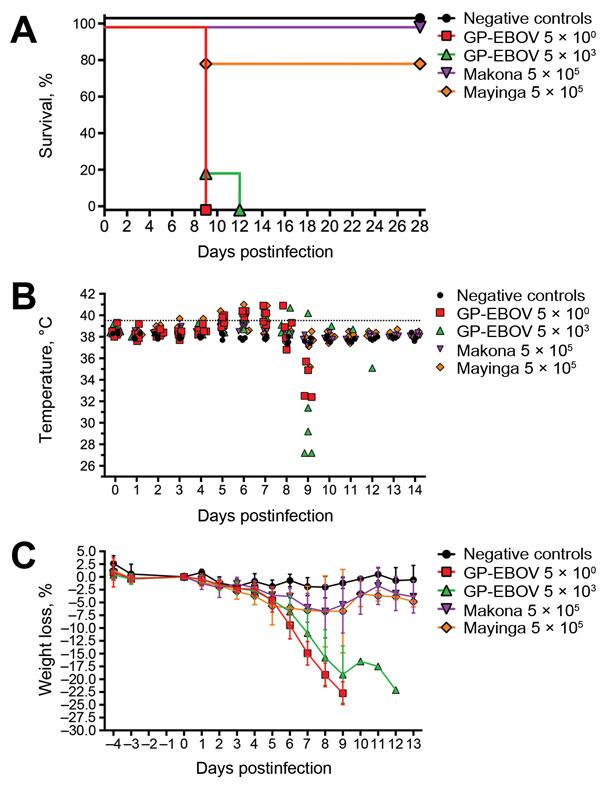Volume 21, Number 10—October 2015
Dispatch
Utility of Oral Swab Sampling for Ebola Virus Detection in Guinea Pig Model
Figure

Figure. Clinical course of guinea pigs infected with guinea pig–adapted Ebola virus (GP-EBOV), wild-type EBOV Makona, and wild-type EBOV Mayinga, by number of days postinfection. A) Percentage of animals that survived. B) Subcutaneous microchip temperature. Dotted line indicates upper limit of reference temperature range for guinea pigs. C) Weight loss from 0 days postinfection.
Page created: September 22, 2015
Page updated: September 22, 2015
Page reviewed: September 22, 2015
The conclusions, findings, and opinions expressed by authors contributing to this journal do not necessarily reflect the official position of the U.S. Department of Health and Human Services, the Public Health Service, the Centers for Disease Control and Prevention, or the authors' affiliated institutions. Use of trade names is for identification only and does not imply endorsement by any of the groups named above.